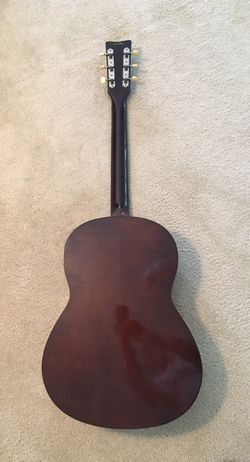


At the very least, it will need the neck straightened. Red arrow points to a bubbled-up spot on the pickguard, about the size of a dime, on the 6th photo. Red arrow points to a chip of the wood on the 5th photo. I had a Taiwanese FG-200 which I loved also. As stated in my first post, I also have an FG-300 which sounds utterly majestic. You can get a red label FG-75 for under 100 and are superb parlor sized acoustics. Its already a higher register sounding instrument, but I love using a capo with it. Missing the nut, the bridge and the bridge pins. Excellent for that Nick Drake finger picking sound. Over the course of the 70s, the Japanese output improved dramatically, and in many ways these early 70s models are a low point for the brand. Early 70s Yamaha FG-75 acoustic guitar for a luthier project. These new Epiphones were based on existing Matsumoku guitars, sharing body shapes, and hardware, but the Epiphone line was somewhat upgraded, with inlaid logos and a 2x2 peghead configuration.

The Matsumoku factory had been producing guitars for export for some time, but the 1820 bass (alongside a number of guitar models and the 5120 electric acoustic bass) were the first Epiphone models to be made there. By the end of the 1960s, a decision had been made to move Epiphone guitar production from the USA (at the Kalamazoo plant where Gibson guitars were made), to Matsumoto in Japan, creating a line of guitars and basses significantly less expensive than the USA-built models (actually less than half the price).


 0 kommentar(er)
0 kommentar(er)
